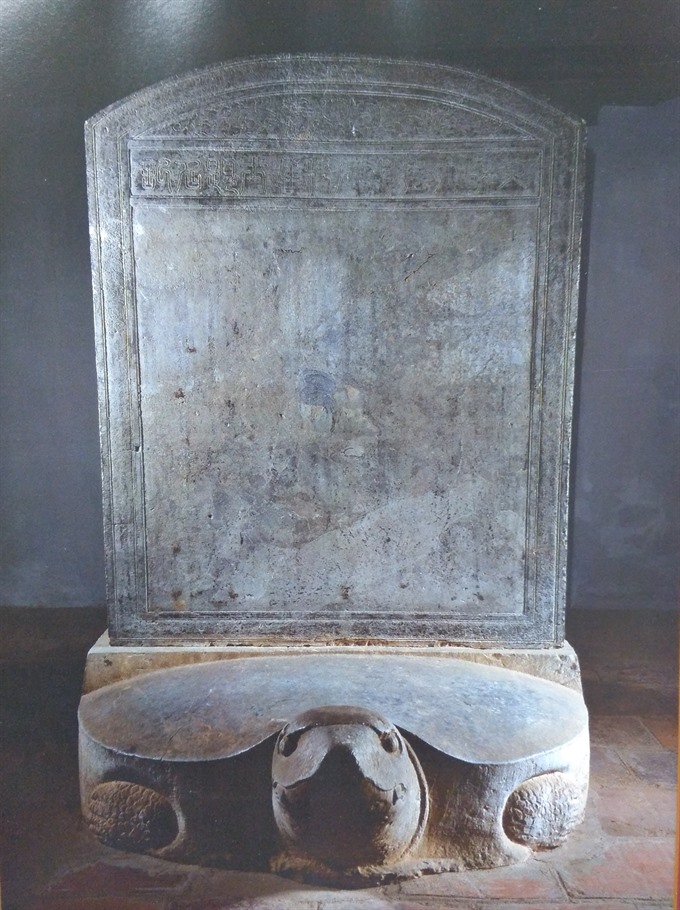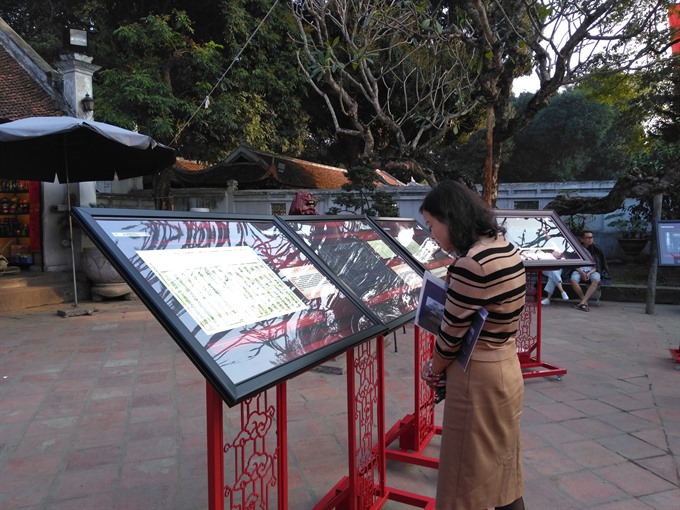 Life & Style
Life & Style

An exhibition on the history of Việt Nam’s imperial examinations through documentary heritage of the world shows how studying and examinations were regarded and instituted by kings.
 |
| Piece of history: One of the 82 stone steles at the Temple of Literature, recording examinations organised under feudalism. — VNS Photo Minh Thu |
HÀ NỘI — ‘Entrants who come first in the test will be honoured on a golden board, rewarded with a beautiful costume and invited to attend a royal feast.’ So says the text carved on a stone stele for a royal examination held in 1442 under the reign of King Lê Thái Tông.
The stele is part of an exhibition on the history of Việt Nam’s imperial examinations through documentary heritage of the world. The exhibition shows how studying and examinations were regarded and instituted by the kings.
The exhibition opened at the Temple of Literature in Hà Nội on March 5.
On display are more than 50 documents and images showcasing the history of Việt Nam’s examinations, which were selected from three world documentary heritages, including Nguyễn Dynasty (1802 – 1945) woodblocks, Nguyễn Dynasty administrative documents stored by the National Archives Centre, and the doctoral steles in the Temple of Literature.
The exhibition is divided into three parts: the history of Vietnamese education and examinations over dynasties; Quốc Tử Giám (the first national university, a high-ranking educational centre under the monarchy); and the steles of outstanding doctors and laureates.
Visitors to the exhibition can learn more about exam regulations and rewards bestowed by kings on candidates in the feudal period.
“The event also aims to raise public awareness of the preservation and promotion of national cultural heritages and world documentary heritages,” said Lê Xuân Kiêu, director of the Temple of Literature’s Culture and Science Centre.
 |
| National education: A visitor learns about examinations and studying under feudalism. — VNS Photo Minh Thu |
Recognised as a UNESCO Memory of the World Programme last year, the Imperial Archives of the Nguyễn Dynasty are administrative archives of the last feudal dynasty of Việt Nam. The collection reflects all aspects of Vietnamese social history at the time and the diplomatic relations of the Nguyễn Dynasty with other countries all over the world.
The collection is also the only original administrative record which contains autographs of ten Nguyễn Emperors. The 34,555 woodblocks of the Nguyễn Dynasty helped to record official literature and history as well as classic and historical books. Therefore, apart from their historical value, the woodblocks also have artistic and technical merit as they mark the development of woodblock carving and the printing profession in Việt Nam.
The Temple of Literature and the First University of Việt Nam was established between 1070 and 1076 under the Lý Dynasty (1010-1225). After many royal examinations, in 1482, King Lê Thánh Tông (who reigned from 1460 to 1497) ordered the erection of stone steles inscribed with the names and native lands of the first laureates of the royal examinations since the examinations began in 1442.
Between 1442 and 1779, 124 doctoral examinations were held, but now only 82 stone steles are preserved in Văn Miếu-Quốc Tử Giám. The steles are placed on the back of stone turtles, a symbol of the immortality of the nation.
The 82 stone steles have great value in sculpture and calligraphy. The steles with epitaphs composed by cultural celebrities and bright scholars of the country can be seen as pieces of art and are considered as “stone history sets” on Việt Nam’s Confucian education.
The stone stele collection was added to the UNESCO Memory of the World Programme on March 9, 2010, and was recognised as a National Treasure on January 14, 2015.
The exhibition will run until April 5 at the Temple of Literature, 58 Quốc Tử Giám Street, Hà Nội. — VNS




